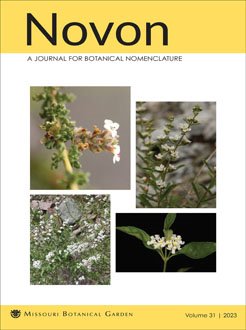Dalbergia emirnensis Benth. was previously treated as comprising two entities, the typical variety from the Central Highlands of Madagascar and D. emirnensis var. decaryi Bosser & R. Rabev. from the southern part of the country at lower altitudes. Additional collections and analyses demonstrate that, as currently delimited, these taxa exhibit considerable, discontinuous variability in morphology, habitat, and distribution, a finding supported by a recent phylogenomic study. We show that the material previously included in the typical variety of D. emirnensis represents two morphologically and geographically distinct entities, one that occurs only in the Central Highlands of Madagascar and includes the type specimen, and another that is morphologically and genetically more akin to D. emirnensis var. decaryi, found in the Southern Highlands of Madagascar. We describe the latter as a new species, D. nemoralis Rakoton., Phillipson & Crameri, in which we include D. emirnensis var. decaryi, recognizing it as a distinct subspecies. We also show that D. campenonii Drake should be treated as a synonym of D. emirnensis. Each of the accepted taxa is provided with a full description, a comprehensive listing of specimens examined, details of its geographic distribution and habitat, and a provisional risk of extinction assessment using the IUCN Red List categories and criteria; a line drawing is also provided for D. nemoralis subsp. nemoralis.
Deux entités étaient reconnues auparavant au sein de Dalbergia emirnensis Benth., la variété typique venant des Hautes Terres centrales de Madagascar et D. emirnensis var. decaryi Bosser & R. Rabev. de la partie sud de l'île, à des altitudes plus basses. Des co-llectes nouvelles et des analyses supplémentaires montrent que, tels que délimités actuellement, ces taxons présentent une variabilité considérable et discontinue dans leurs morphologies, leurs habitats et leurs aires de répartition, une constatation qui est soutenue par une étude phylogénomique récente. Nous montrons que le matériel précédemment inclus dans la variété typique de D. emirnensis représente deux entités morphologi-quement et géographiquement distinctes, l'une distribuée seulement dans les Hautes Terres centrales qui correspond au type, et l'autre qui est morphologique-ment et génétiquement plus apparentée à D. emirnensis var. decaryi, et que l'on trouve dans les Hautes Terres du Sud de Madagascar. Nous décrivons cette dernière en tant qu'une nouvelle espèce, D. nemoralis Rakoton., Phillipson & Crameri dans laquelle nous reconnais-sons D. emirnensis var. decaryi comme une sous-espèce distincte. Par ailleurs, nous montrons que D. campenonii Drake est mieux placé en synonymie sous D. emirnensis. Chacun des taxons acceptés est accompagné d'une description complète, d'une liste compréhensive de spécimens examinés, des détails sur sa répartition géographique, son habitat, et une évaluation provisoire du risque d'extinction selon les catégories et les critères de la Liste rouge de l'UICN; un dessin à trait est fourni pour D. nemoralis subsp. nemoralis.






